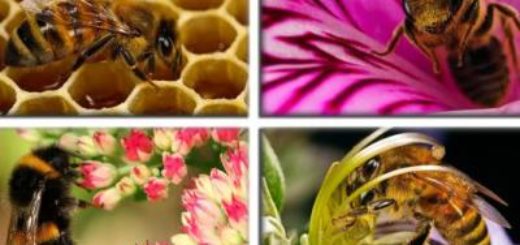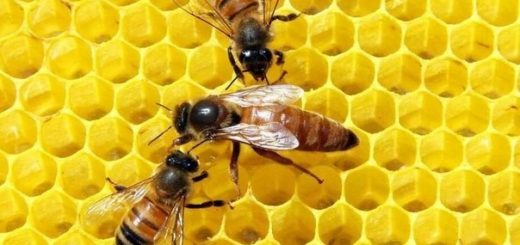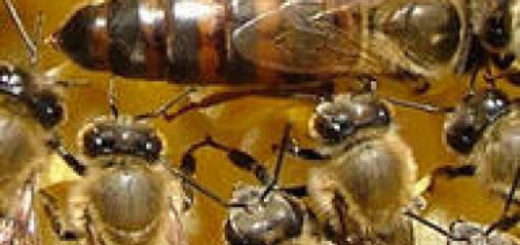What to do if bitten by a bee
The bee is a real symbol of diligence, in addition, this insect is of great benefit to man. But a bee sting can cause an unpleasant and dangerous allergic reaction. When some people easily tolerate such bites, then for others they can pose a significant threat. The simultaneous bites of several insects are especially dangerous. The same applies to wasps. Therefore, every person should know, what to do when bitten by a bee or wasp, and also that, what not to do.
Why is it dangerous??
You should not ignore the danger of a bee or wasp sting. Even for that, who was often stung by these insects in the past and who thinks, which tolerates poison well. An allergic reaction develops from a bee or wasp sting, the level of severity of which can be different. It depends on individual sensitivity to a specific poison, from the number of bites, physical condition of the victim and other factors. Here is a list of the main consequences, which may appear as a result of a bite:
- sharp and severe pain in the place, where the sting penetrated the skin;
- swelling and redness of tissues;
- severe swelling of a body part, stung by an insect;
- headache;
- dizziness, feeling weak;
- vomiting etc. d.
It is worth clarifying, that the more insects bit a person at the same time, the greater the risk of a severe allergic reaction. In some cases, multiple bee or wasp stings lead to death. And although such cases, Fortunately, happen infrequently, Be very careful with bees and wasps.
What is the difference between a bee sting and a wasp sting?

If we talk about the ability to sting, then the wasp can be considered a more dangerous insect, bee knife. The point is, that a wasp has a smooth sting, which she can easily remove from the skin after a bite. Thanks to this, the same insect can sting a person several times in a row, causing great pain. But the bee has a stinger with serrations, which gets stuck in the skin during a bite. That's why the bee, usually, able to sting only once.
The first actions in case of a wasp or wasp bite
It is difficult not to notice the moment of the bite, as you will immediately feel a sharp pain. What to do when bitten by a wasp or bee? The most important thing is not to panic. To begin with, throw off the insect and look, Are there any other insects on your clothes or body?. First aid for a wasp or bee sting should consist of several stages:
- carefully examine the bite site. If a sting is stuck in the skin, it must be carefully removed. Use tweezers for this or remove the stinger, clutching it with her fingernails. Do not press on the skin at the bite site, because because of this the sting can penetrate even deeper into the skin;
- find a piece of cotton wool or a cotton pad, moisten it with an antiseptic and apply it to the bite site. Dangerous microorganisms can get into skin tissues from bee stings, therefore, treatment of the bite site with an antiseptic is mandatory. Hydrogen peroxide is good for this, which should be in every home medicine cabinet;
- for, to reduce pain, apply a piece of ice in a film or cloth to the bitten place. If there is no ice in your refrigerator, is not afraid. You can take any frozen product from the freezer (example, piece of meat), wrap it in cling film and apply it to the bite site for a few minutes. Cooling will also reduce swelling, redness of the skin will pass faster;
- try to drink as much water as possible. It is water, not tea, juice or other drinks. The same should be done then, when you were stung by a wasp or other poisonous insect.
If everything is done correctly and help is provided on time, the consequences of an insect bite, probably, will not be serious, and the unpleasant adventure will soon be forgotten. But if you know, that you or another person may have a particularly severe allergic reaction to the poison, then the first aid for a bee or wasp bite should be provided by doctors. Without medical help, a large swelling can develop from a bee sting, which is accompanied by pain, dizziness and other unpleasant symptoms.
In a particularly severe case, the victim's heart and breathing may even stop, and the reason for this will be such a banal at first glance bee sting. What to do in a serious case? First of all, call an ambulance as soon as possible. While the medics are on their way, give artificial respiration to the injured person, indirect heart massage may be needed. Everyone should learn this, because the ability to do such manipulations can save someone's life in an extreme situation. It will be useful to talk to a doctor or an experienced beekeeper and find out, that helps from a bee sting. One or two effective remedies should always be in your first aid kit.
Treatment
How to treat a bee or wasp sting? It is worth saying right away, that using folk methods for this means taking a risk. Not all folk medicine remedies are safe and really effective. Therefore, it is better not to experiment and use only high-quality drugs from reputable manufacturers for treatment. Do not forget to read the instructions carefully before use.
When you need to see a doctor immediately?
What to do when a bee has stung and after that a particularly strong reaction is observed? Of course, cause “quick”. It is necessary to immediately consult a doctor, if the following symptoms are observed after the bite:
- fever, fever;
- signs of infection of the bite site (one of the most striking is pain, which does not pass, on the contrary, it increases);
- loss of consciousness, violation of pulse and normal breathing rhythm;
- severe vomiting and loss of strength.
Call the doctors, if several bees or wasps stung you or another person at the same time. It is also necessary to use medical assistance, if an insect stung the eyeball, the throat area or the inner surface of the oral cavity.
Now you know, what to do from a bee and wasp bite. Do not underestimate the danger of such bites, because they can cause quite significant damage to health. Always be careful in and around the apiary, where there are many pollinating insects.



